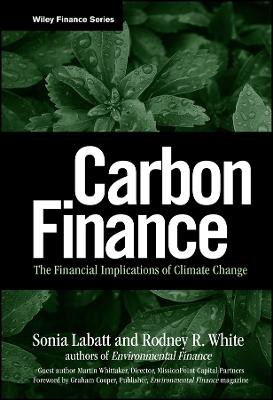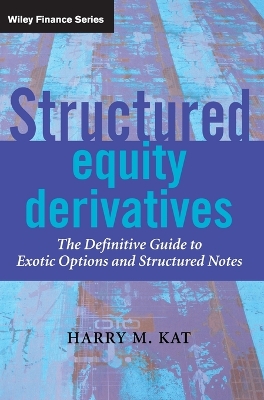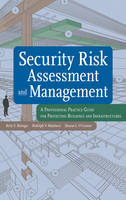Carbon Finance
 -15%
portes grátis
-15%
portes grátis
Carbon Finance
The Financial Implications of Climate Change
White, Rodney R.; Labatt, Sonia
John Wiley & Sons Inc
05/2007
288
Dura
Inglês
9780471794677
15 a 20 dias
536
Descrição não disponível.
Foreword iii
About the Authors xiii
Acknowledgments xv
List of Acronyms xvii
Chapter 1
Introduction 1
Introduction 1
The Changing Climate 3
The Scientific Context of Climate Change 5
The Political Context of Climate Change 8
Corporate Climate Risk 11
Regulatory Risk 11
Physical Risks 13
Business Risks 14
Climate Policies 15
Mitigation Policies 15
Adaptation Measures 19
Role of the Financial Services Sector 21
Conclusion 23
Chapter 2
The Energy Chain 27
Introduction 27
The Energy Chain and the Value Chain 28
Carbon Policies 32
Policy Approaches 32
The Broader Policy Context 33
National and Local Self-Sufficiency 33
Impacts of Different Users and Uses on Climate Change 34
Users: Business, Households, and Government 34
Uses: Manufacturing, Transportation, Heating, Water, and Solid Waste 34
Sources of Energy: Fossil Fuels 36
Coal 36
Oil 37
Gas 38
Sources of Energy: Nuclear Energy 39
Sources of Energy: Hydroelectric Power 41
Sources of Energy: Renewables 42
Traditional Biomass 44
Wind Energy 44
Solar Energy 46
Tidal Energy and Wave Energy 47
Modern Biomass and Biofuels 48
Geothermal Energy 50
Key Issues 50
A Hydrogen Economy Based on Fuel Cells? 51
Carbon Sequestration 52
Unintended Discharges 53
Financing the Transformation of the Energy Chain: The Role of Venture Capital 53
Conclusion 55
Chapter 3
Regulated and Energy-Intensive Sectors 57
Introduction 57
Power Industry 57
Integrated Oil and Gas Industry 65
Government Mandates 65
Physical Capital 66
Restricted Access to Oil and Gas Reserves 66
The Coming Age of Gas, and Beyond 68
Global Concerns Regarding Energy Security 70
Transportation 71
Automotive Industry 72
Factors Affecting Auto Manufacturers' Carbon Profile 76
Aviation 80
Cement 82
Competitive Implications of Climate Risk in Regulated and Energy-Intensive Sectors 84
Conclusion 87
Chapter 4
The Physical Impacts of Climate Change on the Evolution of Carbon Finance 89
Introduction 89
Physical Impacts on Unregulated Sectors 90
Water Supply and Treatment 90
Agriculture 92
Forestry 94
Fisheries 96
Real Property and Production Facilities 96
Transportation 97
Tourism 97
Municipalities 98
The Built Environment 100
Physical Impacts on Carbon-Regulated Sectors 103
Electric Power 103
Oil and Gas Producers 104
Financial Services 105
Banking 105
Investment 106
Insurance 106
Conclusion 108
Chapter 5
Institutional Investors and Climate Change 111
Introduction 111
Institutional Investors: Size and Global Reach 112
Environmental Reporting 112
Corporations 112
Institutional Investors 113
Corporate Environmental Reporting 113
New Era of Fiduciary Responsibility for Institutional Investors 116
Investment Decision Making 117
Active Engagement 118
Shareholder Resolutions and Proxy Voting 120
Mutual Funds 122
New Momentum in the Corporate World 125
Barriers to the Financial Consideration of Climate Change 127
Institutional Investors and Climate Change 130
Institutional Investors' Group on Climate Change (IIGCC) 131
Carbon Disclosure Project (CDP) 131
The Equator Principles 134
Investor Network on Climate Risk (INCR) 135
Conclusion 135
Chapter 6
Emissions Trading in Theory and Practice 137
Introduction 137
How Carbon Is Traded Now 140
The Kyoto Protocol 140
The Chicago Climate Exchange 143
The European Union Emission Trading Scheme 143
The Price of Carbon in the EU ETS 148
Countries outside Europe with Kyoto Caps 150
Carbon Markets in the United States and Australia 151
Setting up the Clean Development Mechanism and Joint Implementation 153
The Role of Carbon Funds, Carbon Brokers, and Exchanges 156
Key Issues 159
Verification-Protocols for Measuring Emission Reductions 159
Controlling the Sale of ''Hot Air'' 160
The Quality and Price of Carbon Credits 161
Enforcing Compliance 161
Integrating the Various Trading Platforms 162
The CDM Bottleneck 162
Extending the Time Horizon beyond 2012 163
Extending Carbon Caps to Uncapped Parties 163
The Carbon Offset Market 164
The Role of Insurance in Emissions Trading 165
Issues for Dispute Resolution 166
Conclusion 166
Chapter 7
Climate Change and Environmental Security: Individuals, Communities, Nations 169
Introduction 169
Direct Effect of Extreme Weather Events 170
Health Effects of Climate Change 173
Direct Effects of Temperature Extremes: Heat Waves and Cold Spells 174
Indirect Effects of Climate Change: Vector-Borne Infectious Diseases 175
Polar Regions 179
Climate Systems and National Sovereignty 181
The Gulf Stream and the Thermohaline Current 181
The El Nino/Southern Oscillation (ENSO) 183
Conclusion 185
Chapter 8
Adapting to Adverse and Severe Weather 187
Introduction 187
Adverse Weather: The Role of Weather Derivatives 188
Weather Derivative Instruments 191
Examples of Weather Derivative Contracts 192
Current Status of Weather Markets 193
Constraints on the Weather Derivatives Market 196
Severe Weather: The Role of Catastrophe Bonds 198
The Structure of a Catastrophe Bond 199
Catastrophe Bonds and Carbon Finance 200
Conclusion 201
Chapter 9
Key Players in the Carbon Markets by Martin Whittaker, guest author 205
Introduction 205
Basic Elements of the Market 206
EU ETS Trading 206
Clean Development Mechanism (CDM) and Joint Implementation (JI) Projects 207
Intermediaries, Speculators, and Professional Services 208
Key Private-Sector Players 210
Compliance Participants 210
Commercial Banks 210
Carbon Funds 211
Speculative Investors 211
Project Developers and Aggregators, Consultants 213
Equity Research 213
Carbon Brokers 215
Exchanges 216
Credit Rating Agencies 217
Insurers 217
Key Players from the Public Sector 218
National Governments 218
National Business Associations 219
Multilateral Banks 219
Information Services 220
Professional Services 221
Accounting 221
Legal 221
New Horizons for the Carbon Market 222
Carbon as an Asset Class 222
Mainstreaming into Project Finance 222
Conclusion 223
Chapter 10
Carbon Finance: Present Status and Future Prospects 225
Introduction 225
Trading Volumes in Carbon and Weather Markets 227
Carbon Markets 227
Weather Derivatives 228
What Can Be Traded Where? (and What Cannot?) 229
Price Discovery 230
The Evolution of Products for Carbon Finance 231
Litigation over Responsibility for Climate Change 232
Is Carbon Finance Likely to Help Us Avert Dangerous Levels of Climate Change? 234
Carbon Finance within the Broader Field of Environmental Finance 235
Conclusion 237
Endnotes 241
Web Sites 245
References 247
Index 263
About the Authors xiii
Acknowledgments xv
List of Acronyms xvii
Chapter 1
Introduction 1
Introduction 1
The Changing Climate 3
The Scientific Context of Climate Change 5
The Political Context of Climate Change 8
Corporate Climate Risk 11
Regulatory Risk 11
Physical Risks 13
Business Risks 14
Climate Policies 15
Mitigation Policies 15
Adaptation Measures 19
Role of the Financial Services Sector 21
Conclusion 23
Chapter 2
The Energy Chain 27
Introduction 27
The Energy Chain and the Value Chain 28
Carbon Policies 32
Policy Approaches 32
The Broader Policy Context 33
National and Local Self-Sufficiency 33
Impacts of Different Users and Uses on Climate Change 34
Users: Business, Households, and Government 34
Uses: Manufacturing, Transportation, Heating, Water, and Solid Waste 34
Sources of Energy: Fossil Fuels 36
Coal 36
Oil 37
Gas 38
Sources of Energy: Nuclear Energy 39
Sources of Energy: Hydroelectric Power 41
Sources of Energy: Renewables 42
Traditional Biomass 44
Wind Energy 44
Solar Energy 46
Tidal Energy and Wave Energy 47
Modern Biomass and Biofuels 48
Geothermal Energy 50
Key Issues 50
A Hydrogen Economy Based on Fuel Cells? 51
Carbon Sequestration 52
Unintended Discharges 53
Financing the Transformation of the Energy Chain: The Role of Venture Capital 53
Conclusion 55
Chapter 3
Regulated and Energy-Intensive Sectors 57
Introduction 57
Power Industry 57
Integrated Oil and Gas Industry 65
Government Mandates 65
Physical Capital 66
Restricted Access to Oil and Gas Reserves 66
The Coming Age of Gas, and Beyond 68
Global Concerns Regarding Energy Security 70
Transportation 71
Automotive Industry 72
Factors Affecting Auto Manufacturers' Carbon Profile 76
Aviation 80
Cement 82
Competitive Implications of Climate Risk in Regulated and Energy-Intensive Sectors 84
Conclusion 87
Chapter 4
The Physical Impacts of Climate Change on the Evolution of Carbon Finance 89
Introduction 89
Physical Impacts on Unregulated Sectors 90
Water Supply and Treatment 90
Agriculture 92
Forestry 94
Fisheries 96
Real Property and Production Facilities 96
Transportation 97
Tourism 97
Municipalities 98
The Built Environment 100
Physical Impacts on Carbon-Regulated Sectors 103
Electric Power 103
Oil and Gas Producers 104
Financial Services 105
Banking 105
Investment 106
Insurance 106
Conclusion 108
Chapter 5
Institutional Investors and Climate Change 111
Introduction 111
Institutional Investors: Size and Global Reach 112
Environmental Reporting 112
Corporations 112
Institutional Investors 113
Corporate Environmental Reporting 113
New Era of Fiduciary Responsibility for Institutional Investors 116
Investment Decision Making 117
Active Engagement 118
Shareholder Resolutions and Proxy Voting 120
Mutual Funds 122
New Momentum in the Corporate World 125
Barriers to the Financial Consideration of Climate Change 127
Institutional Investors and Climate Change 130
Institutional Investors' Group on Climate Change (IIGCC) 131
Carbon Disclosure Project (CDP) 131
The Equator Principles 134
Investor Network on Climate Risk (INCR) 135
Conclusion 135
Chapter 6
Emissions Trading in Theory and Practice 137
Introduction 137
How Carbon Is Traded Now 140
The Kyoto Protocol 140
The Chicago Climate Exchange 143
The European Union Emission Trading Scheme 143
The Price of Carbon in the EU ETS 148
Countries outside Europe with Kyoto Caps 150
Carbon Markets in the United States and Australia 151
Setting up the Clean Development Mechanism and Joint Implementation 153
The Role of Carbon Funds, Carbon Brokers, and Exchanges 156
Key Issues 159
Verification-Protocols for Measuring Emission Reductions 159
Controlling the Sale of ''Hot Air'' 160
The Quality and Price of Carbon Credits 161
Enforcing Compliance 161
Integrating the Various Trading Platforms 162
The CDM Bottleneck 162
Extending the Time Horizon beyond 2012 163
Extending Carbon Caps to Uncapped Parties 163
The Carbon Offset Market 164
The Role of Insurance in Emissions Trading 165
Issues for Dispute Resolution 166
Conclusion 166
Chapter 7
Climate Change and Environmental Security: Individuals, Communities, Nations 169
Introduction 169
Direct Effect of Extreme Weather Events 170
Health Effects of Climate Change 173
Direct Effects of Temperature Extremes: Heat Waves and Cold Spells 174
Indirect Effects of Climate Change: Vector-Borne Infectious Diseases 175
Polar Regions 179
Climate Systems and National Sovereignty 181
The Gulf Stream and the Thermohaline Current 181
The El Nino/Southern Oscillation (ENSO) 183
Conclusion 185
Chapter 8
Adapting to Adverse and Severe Weather 187
Introduction 187
Adverse Weather: The Role of Weather Derivatives 188
Weather Derivative Instruments 191
Examples of Weather Derivative Contracts 192
Current Status of Weather Markets 193
Constraints on the Weather Derivatives Market 196
Severe Weather: The Role of Catastrophe Bonds 198
The Structure of a Catastrophe Bond 199
Catastrophe Bonds and Carbon Finance 200
Conclusion 201
Chapter 9
Key Players in the Carbon Markets by Martin Whittaker, guest author 205
Introduction 205
Basic Elements of the Market 206
EU ETS Trading 206
Clean Development Mechanism (CDM) and Joint Implementation (JI) Projects 207
Intermediaries, Speculators, and Professional Services 208
Key Private-Sector Players 210
Compliance Participants 210
Commercial Banks 210
Carbon Funds 211
Speculative Investors 211
Project Developers and Aggregators, Consultants 213
Equity Research 213
Carbon Brokers 215
Exchanges 216
Credit Rating Agencies 217
Insurers 217
Key Players from the Public Sector 218
National Governments 218
National Business Associations 219
Multilateral Banks 219
Information Services 220
Professional Services 221
Accounting 221
Legal 221
New Horizons for the Carbon Market 222
Carbon as an Asset Class 222
Mainstreaming into Project Finance 222
Conclusion 223
Chapter 10
Carbon Finance: Present Status and Future Prospects 225
Introduction 225
Trading Volumes in Carbon and Weather Markets 227
Carbon Markets 227
Weather Derivatives 228
What Can Be Traded Where? (and What Cannot?) 229
Price Discovery 230
The Evolution of Products for Carbon Finance 231
Litigation over Responsibility for Climate Change 232
Is Carbon Finance Likely to Help Us Avert Dangerous Levels of Climate Change? 234
Carbon Finance within the Broader Field of Environmental Finance 235
Conclusion 237
Endnotes 241
Web Sites 245
References 247
Index 263
Este título pertence ao(s) assunto(s) indicados(s). Para ver outros títulos clique no assunto desejado.
finance; opportunities; climate; financial; change; measures; managing; adaptive; economy; thorough; products; risk; carbon; insurance; constrained; description; enormous; years; implications; climate change; investors
Foreword iii
About the Authors xiii
Acknowledgments xv
List of Acronyms xvii
Chapter 1
Introduction 1
Introduction 1
The Changing Climate 3
The Scientific Context of Climate Change 5
The Political Context of Climate Change 8
Corporate Climate Risk 11
Regulatory Risk 11
Physical Risks 13
Business Risks 14
Climate Policies 15
Mitigation Policies 15
Adaptation Measures 19
Role of the Financial Services Sector 21
Conclusion 23
Chapter 2
The Energy Chain 27
Introduction 27
The Energy Chain and the Value Chain 28
Carbon Policies 32
Policy Approaches 32
The Broader Policy Context 33
National and Local Self-Sufficiency 33
Impacts of Different Users and Uses on Climate Change 34
Users: Business, Households, and Government 34
Uses: Manufacturing, Transportation, Heating, Water, and Solid Waste 34
Sources of Energy: Fossil Fuels 36
Coal 36
Oil 37
Gas 38
Sources of Energy: Nuclear Energy 39
Sources of Energy: Hydroelectric Power 41
Sources of Energy: Renewables 42
Traditional Biomass 44
Wind Energy 44
Solar Energy 46
Tidal Energy and Wave Energy 47
Modern Biomass and Biofuels 48
Geothermal Energy 50
Key Issues 50
A Hydrogen Economy Based on Fuel Cells? 51
Carbon Sequestration 52
Unintended Discharges 53
Financing the Transformation of the Energy Chain: The Role of Venture Capital 53
Conclusion 55
Chapter 3
Regulated and Energy-Intensive Sectors 57
Introduction 57
Power Industry 57
Integrated Oil and Gas Industry 65
Government Mandates 65
Physical Capital 66
Restricted Access to Oil and Gas Reserves 66
The Coming Age of Gas, and Beyond 68
Global Concerns Regarding Energy Security 70
Transportation 71
Automotive Industry 72
Factors Affecting Auto Manufacturers' Carbon Profile 76
Aviation 80
Cement 82
Competitive Implications of Climate Risk in Regulated and Energy-Intensive Sectors 84
Conclusion 87
Chapter 4
The Physical Impacts of Climate Change on the Evolution of Carbon Finance 89
Introduction 89
Physical Impacts on Unregulated Sectors 90
Water Supply and Treatment 90
Agriculture 92
Forestry 94
Fisheries 96
Real Property and Production Facilities 96
Transportation 97
Tourism 97
Municipalities 98
The Built Environment 100
Physical Impacts on Carbon-Regulated Sectors 103
Electric Power 103
Oil and Gas Producers 104
Financial Services 105
Banking 105
Investment 106
Insurance 106
Conclusion 108
Chapter 5
Institutional Investors and Climate Change 111
Introduction 111
Institutional Investors: Size and Global Reach 112
Environmental Reporting 112
Corporations 112
Institutional Investors 113
Corporate Environmental Reporting 113
New Era of Fiduciary Responsibility for Institutional Investors 116
Investment Decision Making 117
Active Engagement 118
Shareholder Resolutions and Proxy Voting 120
Mutual Funds 122
New Momentum in the Corporate World 125
Barriers to the Financial Consideration of Climate Change 127
Institutional Investors and Climate Change 130
Institutional Investors' Group on Climate Change (IIGCC) 131
Carbon Disclosure Project (CDP) 131
The Equator Principles 134
Investor Network on Climate Risk (INCR) 135
Conclusion 135
Chapter 6
Emissions Trading in Theory and Practice 137
Introduction 137
How Carbon Is Traded Now 140
The Kyoto Protocol 140
The Chicago Climate Exchange 143
The European Union Emission Trading Scheme 143
The Price of Carbon in the EU ETS 148
Countries outside Europe with Kyoto Caps 150
Carbon Markets in the United States and Australia 151
Setting up the Clean Development Mechanism and Joint Implementation 153
The Role of Carbon Funds, Carbon Brokers, and Exchanges 156
Key Issues 159
Verification-Protocols for Measuring Emission Reductions 159
Controlling the Sale of ''Hot Air'' 160
The Quality and Price of Carbon Credits 161
Enforcing Compliance 161
Integrating the Various Trading Platforms 162
The CDM Bottleneck 162
Extending the Time Horizon beyond 2012 163
Extending Carbon Caps to Uncapped Parties 163
The Carbon Offset Market 164
The Role of Insurance in Emissions Trading 165
Issues for Dispute Resolution 166
Conclusion 166
Chapter 7
Climate Change and Environmental Security: Individuals, Communities, Nations 169
Introduction 169
Direct Effect of Extreme Weather Events 170
Health Effects of Climate Change 173
Direct Effects of Temperature Extremes: Heat Waves and Cold Spells 174
Indirect Effects of Climate Change: Vector-Borne Infectious Diseases 175
Polar Regions 179
Climate Systems and National Sovereignty 181
The Gulf Stream and the Thermohaline Current 181
The El Nino/Southern Oscillation (ENSO) 183
Conclusion 185
Chapter 8
Adapting to Adverse and Severe Weather 187
Introduction 187
Adverse Weather: The Role of Weather Derivatives 188
Weather Derivative Instruments 191
Examples of Weather Derivative Contracts 192
Current Status of Weather Markets 193
Constraints on the Weather Derivatives Market 196
Severe Weather: The Role of Catastrophe Bonds 198
The Structure of a Catastrophe Bond 199
Catastrophe Bonds and Carbon Finance 200
Conclusion 201
Chapter 9
Key Players in the Carbon Markets by Martin Whittaker, guest author 205
Introduction 205
Basic Elements of the Market 206
EU ETS Trading 206
Clean Development Mechanism (CDM) and Joint Implementation (JI) Projects 207
Intermediaries, Speculators, and Professional Services 208
Key Private-Sector Players 210
Compliance Participants 210
Commercial Banks 210
Carbon Funds 211
Speculative Investors 211
Project Developers and Aggregators, Consultants 213
Equity Research 213
Carbon Brokers 215
Exchanges 216
Credit Rating Agencies 217
Insurers 217
Key Players from the Public Sector 218
National Governments 218
National Business Associations 219
Multilateral Banks 219
Information Services 220
Professional Services 221
Accounting 221
Legal 221
New Horizons for the Carbon Market 222
Carbon as an Asset Class 222
Mainstreaming into Project Finance 222
Conclusion 223
Chapter 10
Carbon Finance: Present Status and Future Prospects 225
Introduction 225
Trading Volumes in Carbon and Weather Markets 227
Carbon Markets 227
Weather Derivatives 228
What Can Be Traded Where? (and What Cannot?) 229
Price Discovery 230
The Evolution of Products for Carbon Finance 231
Litigation over Responsibility for Climate Change 232
Is Carbon Finance Likely to Help Us Avert Dangerous Levels of Climate Change? 234
Carbon Finance within the Broader Field of Environmental Finance 235
Conclusion 237
Endnotes 241
Web Sites 245
References 247
Index 263
About the Authors xiii
Acknowledgments xv
List of Acronyms xvii
Chapter 1
Introduction 1
Introduction 1
The Changing Climate 3
The Scientific Context of Climate Change 5
The Political Context of Climate Change 8
Corporate Climate Risk 11
Regulatory Risk 11
Physical Risks 13
Business Risks 14
Climate Policies 15
Mitigation Policies 15
Adaptation Measures 19
Role of the Financial Services Sector 21
Conclusion 23
Chapter 2
The Energy Chain 27
Introduction 27
The Energy Chain and the Value Chain 28
Carbon Policies 32
Policy Approaches 32
The Broader Policy Context 33
National and Local Self-Sufficiency 33
Impacts of Different Users and Uses on Climate Change 34
Users: Business, Households, and Government 34
Uses: Manufacturing, Transportation, Heating, Water, and Solid Waste 34
Sources of Energy: Fossil Fuels 36
Coal 36
Oil 37
Gas 38
Sources of Energy: Nuclear Energy 39
Sources of Energy: Hydroelectric Power 41
Sources of Energy: Renewables 42
Traditional Biomass 44
Wind Energy 44
Solar Energy 46
Tidal Energy and Wave Energy 47
Modern Biomass and Biofuels 48
Geothermal Energy 50
Key Issues 50
A Hydrogen Economy Based on Fuel Cells? 51
Carbon Sequestration 52
Unintended Discharges 53
Financing the Transformation of the Energy Chain: The Role of Venture Capital 53
Conclusion 55
Chapter 3
Regulated and Energy-Intensive Sectors 57
Introduction 57
Power Industry 57
Integrated Oil and Gas Industry 65
Government Mandates 65
Physical Capital 66
Restricted Access to Oil and Gas Reserves 66
The Coming Age of Gas, and Beyond 68
Global Concerns Regarding Energy Security 70
Transportation 71
Automotive Industry 72
Factors Affecting Auto Manufacturers' Carbon Profile 76
Aviation 80
Cement 82
Competitive Implications of Climate Risk in Regulated and Energy-Intensive Sectors 84
Conclusion 87
Chapter 4
The Physical Impacts of Climate Change on the Evolution of Carbon Finance 89
Introduction 89
Physical Impacts on Unregulated Sectors 90
Water Supply and Treatment 90
Agriculture 92
Forestry 94
Fisheries 96
Real Property and Production Facilities 96
Transportation 97
Tourism 97
Municipalities 98
The Built Environment 100
Physical Impacts on Carbon-Regulated Sectors 103
Electric Power 103
Oil and Gas Producers 104
Financial Services 105
Banking 105
Investment 106
Insurance 106
Conclusion 108
Chapter 5
Institutional Investors and Climate Change 111
Introduction 111
Institutional Investors: Size and Global Reach 112
Environmental Reporting 112
Corporations 112
Institutional Investors 113
Corporate Environmental Reporting 113
New Era of Fiduciary Responsibility for Institutional Investors 116
Investment Decision Making 117
Active Engagement 118
Shareholder Resolutions and Proxy Voting 120
Mutual Funds 122
New Momentum in the Corporate World 125
Barriers to the Financial Consideration of Climate Change 127
Institutional Investors and Climate Change 130
Institutional Investors' Group on Climate Change (IIGCC) 131
Carbon Disclosure Project (CDP) 131
The Equator Principles 134
Investor Network on Climate Risk (INCR) 135
Conclusion 135
Chapter 6
Emissions Trading in Theory and Practice 137
Introduction 137
How Carbon Is Traded Now 140
The Kyoto Protocol 140
The Chicago Climate Exchange 143
The European Union Emission Trading Scheme 143
The Price of Carbon in the EU ETS 148
Countries outside Europe with Kyoto Caps 150
Carbon Markets in the United States and Australia 151
Setting up the Clean Development Mechanism and Joint Implementation 153
The Role of Carbon Funds, Carbon Brokers, and Exchanges 156
Key Issues 159
Verification-Protocols for Measuring Emission Reductions 159
Controlling the Sale of ''Hot Air'' 160
The Quality and Price of Carbon Credits 161
Enforcing Compliance 161
Integrating the Various Trading Platforms 162
The CDM Bottleneck 162
Extending the Time Horizon beyond 2012 163
Extending Carbon Caps to Uncapped Parties 163
The Carbon Offset Market 164
The Role of Insurance in Emissions Trading 165
Issues for Dispute Resolution 166
Conclusion 166
Chapter 7
Climate Change and Environmental Security: Individuals, Communities, Nations 169
Introduction 169
Direct Effect of Extreme Weather Events 170
Health Effects of Climate Change 173
Direct Effects of Temperature Extremes: Heat Waves and Cold Spells 174
Indirect Effects of Climate Change: Vector-Borne Infectious Diseases 175
Polar Regions 179
Climate Systems and National Sovereignty 181
The Gulf Stream and the Thermohaline Current 181
The El Nino/Southern Oscillation (ENSO) 183
Conclusion 185
Chapter 8
Adapting to Adverse and Severe Weather 187
Introduction 187
Adverse Weather: The Role of Weather Derivatives 188
Weather Derivative Instruments 191
Examples of Weather Derivative Contracts 192
Current Status of Weather Markets 193
Constraints on the Weather Derivatives Market 196
Severe Weather: The Role of Catastrophe Bonds 198
The Structure of a Catastrophe Bond 199
Catastrophe Bonds and Carbon Finance 200
Conclusion 201
Chapter 9
Key Players in the Carbon Markets by Martin Whittaker, guest author 205
Introduction 205
Basic Elements of the Market 206
EU ETS Trading 206
Clean Development Mechanism (CDM) and Joint Implementation (JI) Projects 207
Intermediaries, Speculators, and Professional Services 208
Key Private-Sector Players 210
Compliance Participants 210
Commercial Banks 210
Carbon Funds 211
Speculative Investors 211
Project Developers and Aggregators, Consultants 213
Equity Research 213
Carbon Brokers 215
Exchanges 216
Credit Rating Agencies 217
Insurers 217
Key Players from the Public Sector 218
National Governments 218
National Business Associations 219
Multilateral Banks 219
Information Services 220
Professional Services 221
Accounting 221
Legal 221
New Horizons for the Carbon Market 222
Carbon as an Asset Class 222
Mainstreaming into Project Finance 222
Conclusion 223
Chapter 10
Carbon Finance: Present Status and Future Prospects 225
Introduction 225
Trading Volumes in Carbon and Weather Markets 227
Carbon Markets 227
Weather Derivatives 228
What Can Be Traded Where? (and What Cannot?) 229
Price Discovery 230
The Evolution of Products for Carbon Finance 231
Litigation over Responsibility for Climate Change 232
Is Carbon Finance Likely to Help Us Avert Dangerous Levels of Climate Change? 234
Carbon Finance within the Broader Field of Environmental Finance 235
Conclusion 237
Endnotes 241
Web Sites 245
References 247
Index 263
Este título pertence ao(s) assunto(s) indicados(s). Para ver outros títulos clique no assunto desejado.





